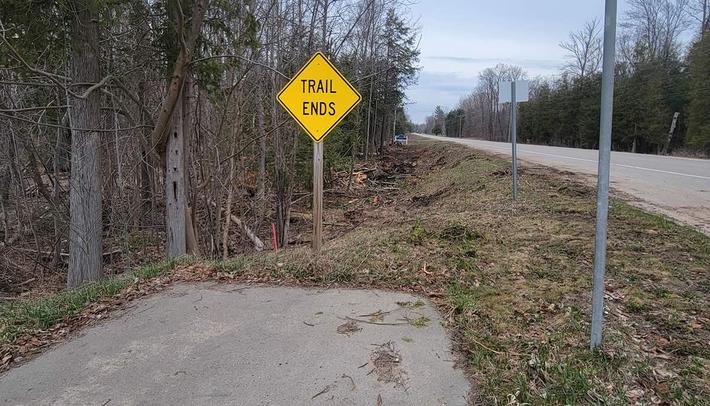Playing Catch Up with Climate
Spectator
By Stephen Tuttle | March 2, 2024
Last year was yet another one for the weather record books. (This seems more like an annual event now than some sort of anomalous outlier.)
According to the European Union’s Copernicus Climate Change Service, 2023 was the hottest year globally on record. Each individual month from June through December was also the hottest ever. For the first time ever, every day in 2023 was at least 1 degree Celsius (1.8 degrees Fahrenheit) above the daily pre-industrial (1850-1900) averages. Two days in November, the 17th and 18th, were two full degrees Celsius (3.6 degrees Fahrenheit) above that average.
While these may not sound like impressive numbers, they are huge for a science in which temperature fluctuations are typically measured in tenths or hundredths of degrees. Potentially worse news is the NASA Goddard Institute for Space Studies, which also looks at weather patterns from their vast array of satellites, predicts 2024 could be warmer still.
That heat, which resulted in hundreds of daily record highs being set in the U.S. and around the world, including record high maximums in 56 U.S. cities just from June 14 through June 19. Another 86 American cities experienced record-breaking overnight high minimum temperatures. Then there was Phoenix, which went an astounding 31 straight days of high temperatures above 110.
The heat exacerbates drought, reservoir declines, and sea level rises. And it turns normal wildfires into a nearly literal Hell.
According to the Canadian Interagency Forest Fire Centre, wildfires in Canada last year burned nearly 46 million acres, an area about the size of Florida. Those fires—we remember the smoke—affected every Canadian province and forced the evacuation of nearly 156,000 people.
Greece was home to the worst wildfires in European Union history, charring more than 300,000 acres, killing 28, and forcing hundreds to wade into the seas for safety.
Some places took a break from wildfires, or relatively so. Australia, which burns so regularly during their summer it’s officially called the bushfire season, had a fairly mundane year by their standards, as did the U.S. According to our National Interagency Fire Center (NIFC), our 2023 wildfire season saw nearly 55,000 wildfires burn 2.7 million acres. (It should be noted they count fires as small as 10 acres). That is a significant step down from the record-breaking 2022 wildfire season that saw 10,000 additional fires that burned an additional 5 million acres.
Unfortunately, Hawai‘i was not nearly so lucky. Fueled by brush parched by an unusual drought and pushed by winds from Hurricane Dora, four wildfires on Maui merged into a single, catastrophic nightmare. Nearly 3,000 homes, businesses, and other structures were destroyed; Lahaina, the former royal capital of the islands, was essentially wiped off the map; and, most tragically, 100 people died in the conflagration. It was the deadliest natural disaster in Hawai‘i’s long history and the deadliest U.S. wildfire since our own Thumb Fire in 1881 that killed 282.
Unfortunately, NIFC tells us we are, on average, experiencing more wildfires lasting longer and burning more acreage than ever before. Increased temperatures nearly everywhere continue to dry out our wildlands fuel load so the potential for even greater fire disasters becomes very real. It isn’t helping that in some of the areas most at-risk for wildfires there is increasing human development interfacing with wildlands.
(For those wishing to pick nits, yes there were times when the planet was quite a bit warmer; it was two million years ago, before the Ice Age, and record-keeping was a little weak.)
The temperature increases have been nearly universal, but precipitation has arrived in floods or not at all. Our west coast certainly benefited from some record precipitation last year, including a monster snowpack in the Sierras. The downside of that was plenty of flash floods and landslides, both now nearly regular features in California.
According to our National Centers for Environmental Information, which is part of the National Oceanic and Atmospheric Administration (NOAA), parts of northern Canada, much of Central America, areas of western and southern Asia and the Middle East, and most of Brazil are experiencing severe or serious drought conditions.
Additionally, parts of Africa, particularly the area in the northwest known as the Maghreb Region and the sub-Saharan east, are suffering both drought and famine. Four million Ethiopians are currently at risk of starvation, as are citizens of Yemen and Gaza beset by war, and those suffering from drought, conflict, corruption, or incompetence in Madagascar, South Sudan, North Korea, and Central African Republic.
We can’t blame it all on our obviously changing climate, but we were warned about rising temperatures, rising sea levels, and increased natural disasters and bizarre weather more than 50 years ago. Now it’s here—all of it. The trend lines are not good, and we’re playing catch up.
Trending

Walking in an Artsy Wonderland
Michigan Legacy Art Park is hosting the “Raindrops” artwork created by Dewey Blocksma and Patricia Innis at th... Read More >>
Seven Takeaways from Local Real Estate Agents for the Spring/Summer Market
The last few years in local real estate have been akin to what one local agent described as the “wild west,” w... Read More >>
Blazing the Boyne City to Charlevoix Trail
We’re getting ever closer to an interconnected northern Michigan thanks to ongoing work on the Boyne City to Charlev... Read More >>


